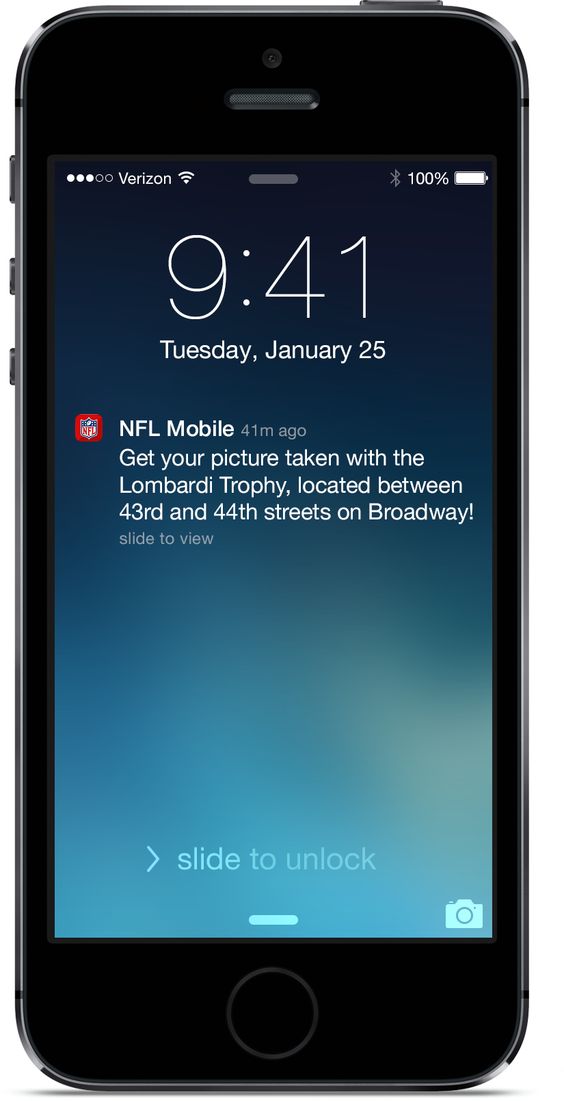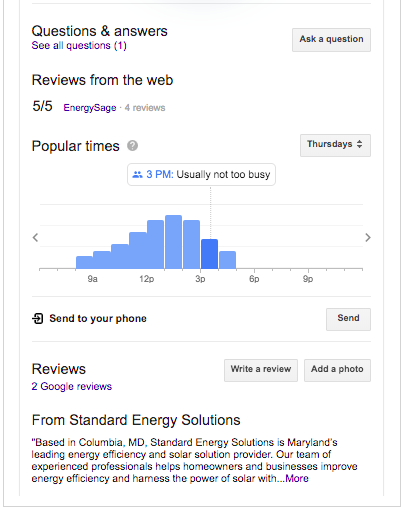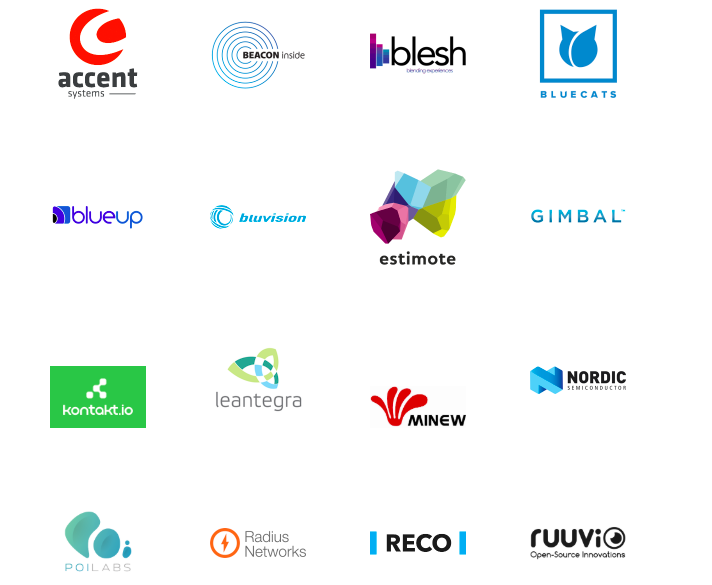Heard of Google Beacon?
What about proximity marketing?
The two are closely tied, and could mean big things for local businesses.
In this article, I’ll go over what you need to know about Google Beacon and what it means for marketing.
What is a Beacon?
First thing you should know: beacon technology isn’t limited (and didn’t start) with Google.
In fact, beacons were first introduced in 2013, and have made a significant impact on marketing over the past five years.
But before we get into that, let’s take a look at what beacons are and what they do.
Beacons are small, Bluetooth-powered devices that connect with smartphones.
Think of it as a four-step process:
- A beacon transmits a continuous radio signal
- The signal is detected by any nearby smart devices via Bluetooth
- The signal tells your smart device you’re in a specific location with an ID number
- Your smart device sends that number to the cloud
Google Beacons: how they work. Image courtesy of beaconstac
What Do Beacons Do?
In practice, beacons are pretty cool.
Imagine, if you will, technology smart enough to pinpoint your exact location – we’re talking as specific as rooms in your house, not just general zip codes or addresses – and remind you to complete certain tasks there.
For example, when you enter your kitchen, it could remind you to grab your grocery list. Or, it could remind you that your internet bill is due on third Wednesday every month when you open up your computer.
If you had a beacon set up in your kitchen or by your computer, that’s exactly what it could do.
Essentially, it’s a way to communicate with a mobile app to deliver relevant content based on a user’s (very specific) location.
What kind of information a beacon transmits depends on how it’s programmed.
What is Google Beacon?
As you probably guessed, Google’s Beacon uses the same technology as third-party beacons.
And it’s not exactly new.
Back in 2015, Google published a new and open format for BLE beacons that anyone could use called Eddystone.
Today, the Google beacon platform consists of three components:
- Eddystone, the open beacon format from Google that works with Android and iOS.
- Nearby API for Android and iOS, managing beacon scanning for your own app.
- Proximity Beacon API for integrating with Google products and your own app.
The cool thing about the introduction and subsequent adoption of Eddystone is that it doesn’t require an app to work.
In previous Bluetooth beacon technology, an app would need to be used to communicate with a user.
But using Eddystone with its Nearby API, a pre-installed service on Android and iOS phones, the smartphone will scan for Eddystone URLs and displays the content linked to it.
All that means is that businesses can send notifications to users – with or without using an app.
And, to spread the word and awareness, Google’s started sending beacons to businesses who use Google’s advertising and have enabled location services earlier this year.
All brands have to do is activate the beacon device and place it somewhere inconspicuously in your physical location.
So How Can Brands Benefit From Google Beacon?
Beacons represent a lot of opportunity for brands, especially those with a local presence.
Most notably, beacons have been used to improve the retail shopping experience.
Beacons can be as specific as what aisle or department a customer is shopping in. For example, if they’re browsing the denim you could deliver a coupon for 20% off.
Or maybe they’re just passing your storefront in a crowded shopping mall. Using a beacon, you could send that person a special discount to entice them to enter.

Google beacons can be used for proximity marketing
Beyond that, beacons can be used to deliver relevant product information. So if a customer is looking at a blender, beacon tech can be used to send that customer information about the product – think recipes, etc.
We call this proximity marketing – communicating with customers based on location with highly-personalized, relevant messaging.
Unlike location-based marketing, which usually works inside of a defined virtual geofence and targets everyone in that space, proximity marketing reaches out based on a more granular, accurate location, like a specific storefront.
And research shows that this kind of proximity marketing is extremely effective, giving retailers an opportunity to increase profits by nearly 9%, with an ROI of 175%.
Of course, fitting them into a marketing strategy comes with its challenges.
Mainly, marketers must find the right balance of offering value to customers without disrupting their shopping experience in the process.
Additionally, for anyone not using Eddystone (or who doesn’t want to run the risk of unwanted communication) you’ll need customers to opt-in to receive beacon messaging.
Many retailers are getting around that last one by partnering with major shopping or coupon apps to push their beacon messaging.
Google Beacon and Local SEO
Outside of proximity marketing, Google beacons can have an – albeit indirect – effect on your local SEO.
Using Google’s Proximity Beacon API, a Google beacon can be used to gather photos, reviews, and other user-generated content from people who have visited your location.
Beyond that, beacons are used by Google to collect information like popular times, typical visit duration to help customers plan their visit to your business and provide Location Insights about how customers engage with your store.

Google beacons can collect information on popular times and foot traffic
So, while just having and using a beacon won’t affect your SEO in itself, but it can affect a lot of the factors Google takes into consideration when putting together Maps and the Local Knowledge Panel.
It works like this: when location-enabled users visit your business, they’ll receive a notification asking them to leave a review or upload a photo.
And as we know, collecting positive reviews and user-generated content acts as a huge source of social proof, which in turn acts as one of the biggest incentives to get customers in the door.
How Brands are Using Google Beacon
There’s no shortage of brands using beacon technology to their advantage – and seeing great results.
-
Macy’s
Back in 2015, Macy’s used beacons during its Thanksgiving season to launch a mobile game aimed at engaging customers.
Beacons were placed throughout 700 stores nationwide, and customers in close proximity received push notifications encouraging them to participate in “Black Friday Walk In and Win.”
At stake was the chance to win $1 million in Macy’s gift codes and other prizes.
Macy’s reported a notable increase in foot traffic and reach.
-
CVS Pharmacies
The well-known pharmacy adopted beacons to send customers real-time customer service notifications, such as prescription refill reminders or pick-up notifications.
The results? 62% of CVS customers said the beacon-powered push notifications improved their in-store experience, and 72% for those who received a pharmacy notification.
-
Target
Target used their beacons a little differently.
Instead of pushing notifications, they set up beacons to help customers find their way through the store and locate specific products.
To do it, a Target map would load on a user’s phone showing their exact location. Then, they could tap on specific items to see which aisles they were located on.
-
Neiman Marcus
Neiman Marcus, on the other hand, used beacons to promote in-store events.
They started small with three stores, and advertised trunk shows, book signings, and other special events taking place in the stores at the same time the customers were shopping.
Neiman Marcus reported that the beacon push delivered similar click-through rates and results as its other marketing messages.
-
Alex and Ani
Alex and Ani, a jewelry retailer, also used the technology a little differently.
While beacon technology absolutely can (and should) be used to push products and promotions, it can also be used to collect valuable insights into your customers.
That’s exactly what Alex and Ani did in all 40 of its locations. Through beacons, they were able to optimize the layout of their stores and their product placement.
They used beacons to send educate its customers about their jewelry, and reported that 30% of the customers that saw their notifications visited the store.
Getting Started With Google Beacon
So, you’re ready to get started with Google beacon?
Great. Here’s what’s next.
First, you’ll need to visit one of Google’s Eddystone-supported partners to find the hardware. Even if you didn’t get one straight from Google and its Project Beacon initiative, anyone of the following can be configured accordingly:
- Accent
- BeaconInside
- Blesh
- BlueCats
- BlueUp
- Bluevision
- Estimote
- Gembal
- Etc.

Get your Google beacon from one of Google’s partners
You’ll then need to configure your beacon. How you do this will depend on how you plan to primarily use the beacon:
- Eddystone-EID:
- Associate one or more data or URL attachments with a beacon.
- Remotely update beacon attachments.
- Monitor beacons using the Google Beacon Dashboard.
- Eddystone-URL
- Lets you advertise a URL, and is designed for interacting with the Physical Web
For more information on which type best fits your goals, take a look at Google’s full documentation here.
If you’ve chosen the Eddystone-EID, you’ll need to register your device with Google.
After that, you’ll need to add attachments – which are essentially the messages and interactions you’d like to have with those in close proximity to your beacon.
Remember, when using this kind of Google beacon technology, you have a responsibility to be respectful of an information or data you collect from users.
To ensure you do so, Google recommends you keep the following key principles in mind:
- Comply with all relevant privacy laws and regulations when handling user information.
- Provide users with (and follow) a privacy policy explaining what user information you collect and how you use it.
- Honor user requests to delete their data.
- Carefully review the Terms of Service before using the Proximity Beacon API, and other terms of service which may apply to your use of other Google APIs, for example, the Nearby Messages API.
Wrapping Up Google Beacon
Google Beacon, and beacon technology, in general, is one more way to interact and engage with users.
And in an age where personalization can quite literally make or break a marketing campaign, Google beacon is well worth a try for any business with a physical location.